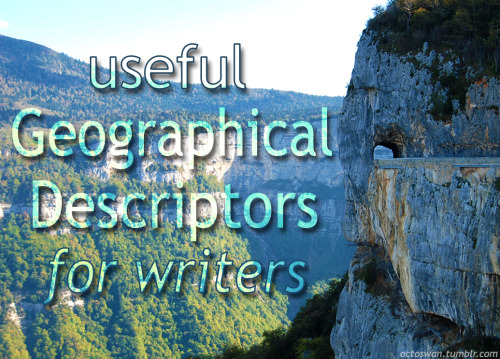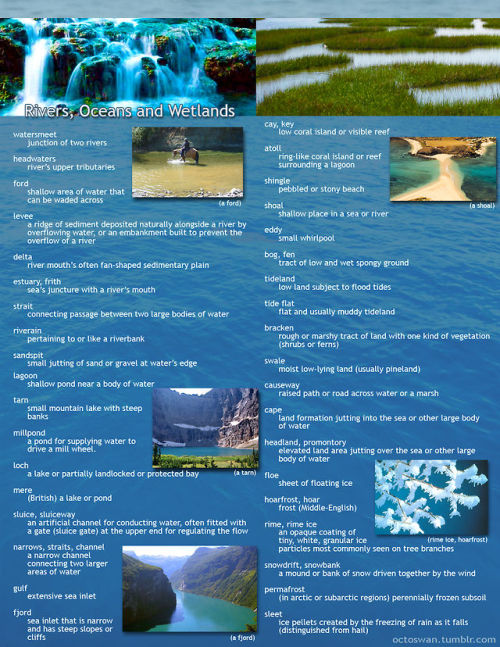my name might be Osana. then again, it might not. oh well! | xxi | she/her
26 posts
Wip Intro
wip intro

THE LOTUS EATERS’ GUIDE TO FREEDOM
Bountiful flower with beauty diverse do all that touch know of your curse?
GENRE: ya contemporary
POV: third person omniscient
TRIGGER WARNING : use of vulgar language, violence, metaphorical reference/depiction of drug use and addiction, homophobia
SYNOPSIS: Time waits for no Soul and Life goes on whether one likes it or not. High school seniors: Mara, Asra, Damien, and Jae know this all too well. With the Future approaching too quick for comfort these four teens stumble upon the answer to all their prayers: the Lotus Flower.
CONFIRMED CHARACTERS
Asra Adams—the dreamer
Jaehyung Lee—the nerd
Damien Smith—the false god
Mara Williams—the loner
INSPIRED BY THE TALE OF ODYSSEUS AND THE LOTUS EATERS
-
 curious-prophet reblogged this · 5 years ago
curious-prophet reblogged this · 5 years ago -
 valiisi liked this · 5 years ago
valiisi liked this · 5 years ago
More Posts from Lotusflowerhaze
Archery information for writers that no one asked for but probably some of you need and I like talking about archery, so here it is.
when you put an arrow on the string, the verb is called “nocking” i.e. eyes glued on the target, he nocked the arrow
also the part of the arrow that gets put onto the string is called the nock. depending on the type of arrow this can be a piece of plastic glued into the arrow, or with wood or bamboo arrows it can be carved into the shaft of the arrow itself
you do not close an eye when aiming or shooting; you see better with both eyes open.
everyone has a dominant eye that more naturally your brain focuses with. that determines whether you are right or left handed when shooting, and doesn’t necessarily correlate to whether the person is right or left handed in anything else
so if you’re writing a character who has difficulty seeing out of one eye, take that into account when they are shooting
if they are right eye dominant, they hold the bow with their left hand and draw the string with their right. if they are left eye dominant, they hold the bow with their right hand and draw the string with their left
if they shoot left, the quiver sits on their left side/hip/thigh. shoot right - right side quiver.
there are several different ways to draw, if you are writing something historical or in a specific region, then do research on that style of archery. but for a generic place to start that is a more universal way of drawing a bow, here are some things to include
the chin stays down. raising your chin will fuck up your aim
the pointer finger on your draw hand rests on the side of your chin/jaw, and the string of the bow will touch the tip of the archer’s nose
weight is on the balls of your feet, leaning slightly forward off your heels
if it is an older bow/barebow, there is not usually a place for the arrow to rest on the bow. this means the arrow rests on the archer’s hand. if they are not wearing a glove on that hand, the fletchings (that’s the feathers on the arrow) will more than likely slice their hand when firing. this scars.
so if you’re wanting to describe someone observing and archer’s hands (hands are hot, don’t @ me) they would see a silver scar about halfway between the pointer finger knuckle and palm of the person’s hand. (turn your hand vertical and trace down the length of your pointer toward your thumb and stop next to the knuckle. that spot there.)
most archers wear something to protect their fingers on the hand that draws the bow. even with that, they have callouses. without it, a lot of callouses, scars, and blisters.
most common draw uses three fingers on the string: pointer, middle, ring. the arrow sits between the pointer and middle. just like where the draw point is, this is not universal and do research if you’re doing something culturally important.
barebow means that the bow is bare of any instruments. no sight, no weights, etc. the most basic/traditional form of bow
a recurve bow is anything where the tips of the bow curve back around forward, away from the archer
a compound is what you think of as a modern hunting bow, and is recognisable by having wheels at the ends and three strings
arrows have three fletchings that form a triangle, the point faces the archer so that the flat of the arrow will pass the flat of the bow on release. the arrow sits on the side of the bow facing the archer
archers with a larger/raised chest will sometimes where a chest protect so that the string does not catch when firing (this is regardless of gender, i know several cis-men who need it as well)
string can also catch on the forearm that is holding the bow and creates bruises and welts if you don’t wear a protector. modern ones are small plastic and cover just the spot, with elastic holding it in place. traditional ones are leather and wrap all the way around, lacing up on the back of your arm like a corset.
there is literally so much more, but i feel like this is plenty to get you started, and as always, feel free to drop an ask in my box if you need something more!





I made these as a way to compile all the geographical vocabulary that I thought was useful and interesting for writers. Some descriptors share categories, and some are simplified, but for the most part everything is in its proper place. Not all the words are as useable as others, and some might take tricky wording to pull off, but I hope these prove useful to all you writers out there!
(save the images to zoom in on the pics)

Resource: Writing a Character with Magical Powers
So you want to write a magical character, but you can’t decide on a power, or you’re not sure of the “laws of magic” and how they apply to your specific story. There are many different magical realms in literature, each with a few different qualifications and “rules,” but when it comes to writing your own, here are some basic guides and outlines to forming your magical world, your magical character, and their powerful capabilities;
General Advice:
Writing Realistically About Magic
How to Create a Unique Magic System For Your Book
How to Write a Character Using Supernatural Powers
Creative Uses of Magic In Your Fantasy Story
Writing Magical Powers
How to Include Magic In Your Story
About Magical and Mythical Creatures
So You Want to Write a Magical Girl Series
The Definite Rules For Writing Magic
Sanderson’s Laws of Magic
Monsters and Magic: A Sample Character
A Guide to Writing Magic
How to Write Magic
Choosing a Power:
Tips and Ideas to Make Better More Interesting Powers
The Top 5 Magical Powers in Fantasy Fiction
Magic and Powers
List of Supernatural Powers and Magic
The 30 Coolest Superhero Powers
What Magical Ability Should My Character Have?
Remember, even witches and wizards are human, so you’ll need to spend just as much time developing their internal characterization as you’ll do creating their powers.
How to Write a Synopsis
Back when I was doing my MA program, I typed up a guide to writing query letters. It’s the post from this blog that I’m most proud of: a thorough step-by-step guide that combines days and weeks of research, and dozens of sources, into a neatly packaged 1,800-word post.
And I have to admit, I didn’t write it for tumblr. I needed to write a query letter myself for a publishing class, and my post was little more than compiled homework notes, saved as a Tumblr post for posterity.
I’ve actually had pieces of this in my drafts for years, but now I actually have to write a synopsis and I’m piling up the research, so I thought it was finally time for the sister to my query post to be published here.
But first…
What is a synopsis?
A synopsis is a 1-2 page summary of the events that transpire in a book, either proposed or already written. It’s used to give people who haven’t read your book a quick overview, so they know the story that’s being told in the book without having to read it.
When is a synopsis necessary?
Some literary agents request synopses along with query letters. More often, they’re used slightly later on in a writer’s career, when they have an agent or an editor and they need to submit a proposal for a new idea or project. A synopsis can also be used later on, in situations that don’t involve the author. For instance, when an editor pitches the book to the marketing and publicity team, who may not have time to read every book they’re working on. Unlike a query letter, the book doesn’t necessarily have to be written when you’re submitting its synopsis.
Basic Style
The job of a synopsis is to lay out the story with little fuss and no frills. They let the person you’re pitching know what they’re going to find in that giant stack of pages on their desk or in that obscenely long Word document (or else in the Word doc they’ll eventually receive).
Most professional synopses follow these rules:
They’re told in third person
They’re told in present tense
Characters’ names are CAPSLOCKED at first mention.
They are double spaced.
They tend to avoid descriptions longer than this sentence.
They focus on the central conflict and the protagonist’s emotional journey
They spoil the ending
They should be 500 words or less. (That is 1 page single-spaced, 2 pages double-spaced.)
HOW TO WRITE YOUR SYNOPSIS
The plot
Writing your synopsis, you have one goal: to tell a 50,000-100,000 word story in 500 words. It can be a little difficult to do this right. A great way to do this is to identify the key turning points in your protagonist’s story.
Do you remember those little plot roller coasters you’d make in elementary school? They’d usually be pointy witch’s-hat shaped things labeled with the terms: “beginning, rising action, climax, falling action, and resolution.”
Those turning points are the events you should be including in your synopsis.This is the structure you want to emphasize to your reader. You want to make abundantly clear that your story works like a story, that the events of your book have a beginning, a middle, and an end, that there’s an intriguing beginning, an exciting climax, a satisfying conclusion. You don’t want to just list out the events of your novel, but highlight the function of those events. X moment is important because it’s the inciting incident, the moment that takes the protagonist from their normal life and throws them into the story.
There are tons of great story roadmaps out there, that go into more specific story elements. The Hero’s Journey is the most famous example of a detailed, and mostly universal, story structure. There’s also the three-act structure that’s famous among screenwriters.
Find a structure that fits your story the best and use that to identify the events of your story that need to make it into your synopsis. I’ll link to different sources at the bottom of this post that will give you variations of story structure.
If you can correlate key scenes in your novel to the descriptions of these plot points, you’ll find an easy roadmap to navigating the many events of outlining your novel.
Your protagonist’s journey
Your protagonist is the heart of your story, and should be the heart of the synopsis, too. The protagonist’s emotional journey may not string all of these plot points together, but it’s going to be what makes them matter to the reader. The human element of your story has to be represented in your synopsis.
There’s no room for long descriptions, so you’ll have to be smart about finding a few terms that not only tell your reader who the character is, but what their story will be. For instance, if your story is about someone trying to get their critically-panned paintings in the Museum of Modern Art by breaking into the museum and installing the pieces themselves, you may want to introduce them with a sentence that begins like so: “When IGNATIUS, an ambitious and untalented struggling artist, discovers his work is rejected from yet another gallery…”
In addition to these descriptive terms, you should spell out what your protagonist wants (or wants desperately to avoid) and their stake in the events of the story.
Along the way, tell us how these key aspects of their persons change due to the events of the story, or else how they influence the events of the story. Tell us about how after raving reviews for his DIY MoMA exhibit came in, Iggy realized that though he still liked painting, his talents actually lay in performance art. Untalented to talented, struggling to successful, all because his ambition pushed him to try new and daring things.
Tips:
As in query letters, you only name the most important characters and locations outright. If you’re writing a synopsis for Harry Potter, you’ll want to use Harry’s name in the query, but most other people and places can be referred to by their function in the novel. Ex: Aunt Petunia and Uncle Vernon can be “his cruel relatives.” Hermione and Ron can be “his friends.” Even Hogwarts can be a “school for people with magical abilities.” This makes it easier for a reader to understand what’s going on in your story. Too many names in such a small amount of space can be overwhelming.
All telling, no showing. This is one piece of writing where you’ll want to tell, instead of show. You need to get to your point as quickly, as clearly, and concisely as possible; this isn’t the place for creative storytelling.
Oftentimes, synopses are given along with other materials, such as pitch letters and sample pages. While a synopsis should be captivating in-so-far that it’s well told, and it should maybe be a little stylish, being captivating and stylish aren’t its main goals. Additional materials like sample pages and pitches have more room for creative flourishes and can do a better job of selling the story, while the synopsis focuses on telling it.
Your synopsis should show that you know how to tell a story. While a synopsis doesn’t sell a story like a query, it should still illustrate the fact that you have an interesting, unique and well-structured plot. When finished, your reader should be able to think to themselves “that’s a good story. I want to read that.”
Your first draft will be too long. Your first draft of a synopsis will always be at least a page or two longer than it should be. Identify the sentences and paragraphs where you explain why a thing happens and ax them. Identify sentences where you repeat yourself and ax them. Identify descriptors that aren’t vital to understanding of the story and ax them. Once you make your first painful cuts and see that the story still makes sense without those things, you’ll start to get a better understanding of what can and cannot be taken out of your synopsis.
Bibliography:
6 Steps for Writing a Book Synopsis
How to Write a 1 Page Synopsis
The Hero’s Journey
Learn How to Write a Synopsis Like a Pro
How to Write a Novel Synopsis
The Secrets of Story Structure
Three Awesome Plot Structures for Building Bestsellers
7 Ways Write Plot Outline
Synopsis for “Bill and Ted’s Excellent Adventure”
How to Plan Your Novel Using a 3 Act Structure - ex. “The Hunger Games”
Story Structure by Plot Point for “Raiders of the Lost Ark”
Why must I put thought into my conlangs? Why can’t they just appear in my mind fully fleshed out?